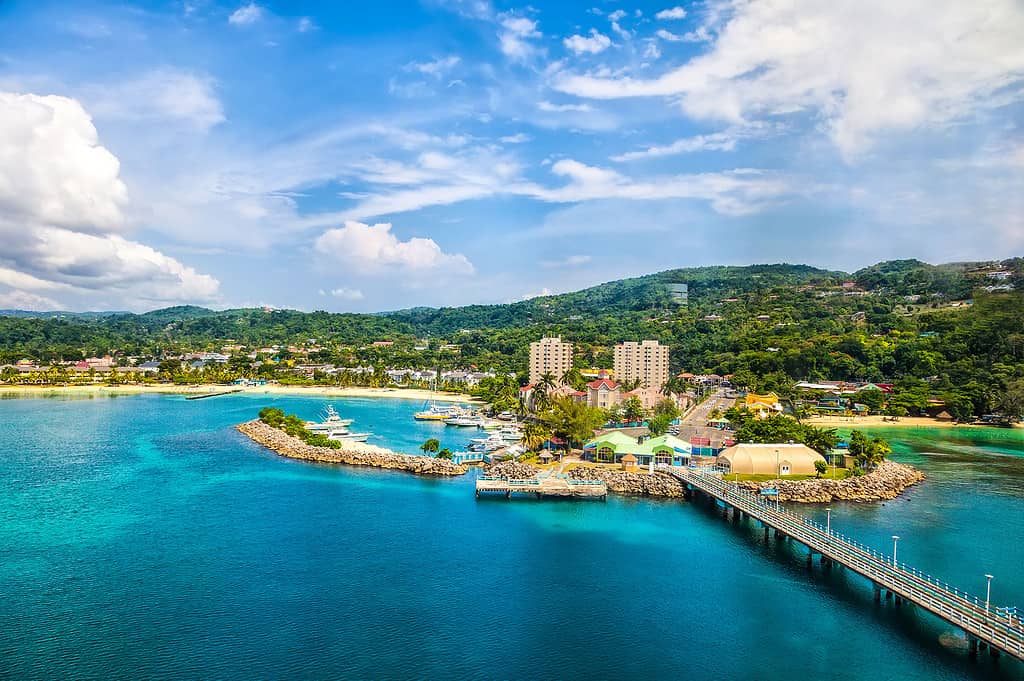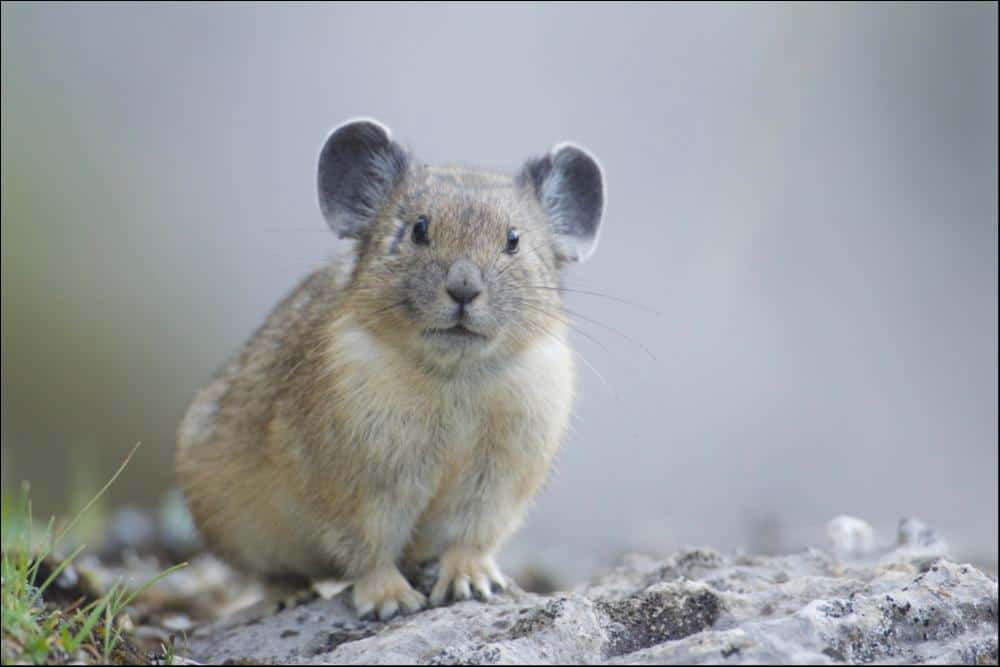A warm, tropical destination, Jamaica is a getaway that appeals to tourists with its beautiful white sand beaches and crystal clear water. But there are certain times of the year that are better than others to plan a Jamaican vacation. Jamaica experiences a long rainy season and can be at risk for hurricanes and other extreme weather. Is late summer a great time to visit? We’ll go over what to expect from the weather in August in Jamaica.
Average August Temperatures in Jamaica
Jamaica is located in the Caribbean, an area associated with tropical vistas and warm ocean breezes. As the third largest of the Caribbean islands, Jamaica sees a lot of tourism and visitors. Kingston (the capital city) and Montego Bay are the two largest cities. The terrain of Jamaica includes beaches, mountains, forests, and plains. Even though the island is small, the diversity of wildlife is amazing!
High temperatures in August average 85 degrees Fahrenheit. It can get as hot as 92 degrees Fahrenheit. The ocean water tends to be a few degrees cooler but is still warm. This makes it ideal for water activities like snorkeling and scuba diving. The amazing wildlife under the water doesn’t hurt either!
Trade winds blow in the area year-round. This helps keep the climate very stable and cool, even as the island enjoys plenty of sun. These cool breezes make Jamaica a great place to spend time outdoors. The temperature doesn’t fluctuate a lot throughout the year. The temperature is a bit lower as you get closer to the mountains, although typically only by a degree or two. Overall, the temperatures in Jamaica are warm but mild and very predictable.

The water around Jamaica is beautiful and clear.
©BigMike Photos/Shutterstock.com
Hottest on Record
On August 3, 2017, temperatures in Kingston rose to 98.4 degrees Fahrenheit. This high temperature was recorded at the Norman Manley International Airport. Kingston is located on the coast, which can often reach higher temperatures than the areas of higher elevation in the center of the island. It is also on the southern side of the island, which tends to be drier and sunny.
Coldest on Record
Low temperatures stay around 75 degrees Fahrenheit in August. The temperate climate is one reason why so many people like to visit. The lowest recorded temperature in August was 70 degrees Fahrenheit. Still sounds like a nice, pleasant day to us!
The colder months in Jamaica are January and February. The average temperatures even in these cold months are around 73 degrees Fahrenheit. Many visitors and residents really like the temperature in Jamaica is so stable and predictable.
August Rainfall in Jamaica
Jamaica is known for getting a lot of rain. After all, it has a tropical climate. The tropics are located between the Tropic of Cancer and the Tropic of Capricorn. They have warm climates all year, including Jamaica. They also tend to get a good amount of rain, especially during their rainy seasons. In August, most of the rain comes in scattered showers that don’t last long. There is still plenty of sunshine. You may even be treated to a rainbow or two as the rain and sun occur together!
The rainy season in Jamaica falls between May and October. Early summer tends to get more precipitation than August, however. September and October are also rainy months compared to August. The driest months in Jamaica occur in the late winter and early spring.
The average rainfall in August is around 3.5 mm per day and 5.2 inches per month. October can get much rainier, with as much as 7 inches or more falling through the entire month. The exception to that is when hurricanes come to Jamaica. August is historically a busy month in hurricane season. Along with severe winds, these storms can bring heavy rainfall to the island.
There is also a lot of variation in rainfall based on the location on the island of Jamaica. The eastern side of the island typically gets much more rain than other areas. The south and southwest parts of Jamaica tend to be the driest. Fortunately, you can explore all areas easily when you visit. It is a great way to see the diverse climate in Jamaica, as well as enjoy some sun or showers depending on your preference.

Ocho Rios is a popular place to visit in Jamaica that gets some rain but has plenty of sunny days as well.
©iStock.com/Ruth Peterkin
Severe Weather in Jamaica
Jamaica is located in the hurricane belt of the Caribbean, an area known for getting hurricanes and severe storms. Hurricane season is typically June through November. August and September are the peak months, although hurricanes can hit at any time of the year if the conditions are right. The trade winds, rainy seasons, and changing atmospheric pressure all combine to create conditions for hurricanes to form.
Hurricanes are categorized based on their wind speed. This refers to sustained wind speed, although many reports include the speeds of wind gusts as well to inform people in the areas of what to expect. Category 1 hurricanes have sustained wind speeds between 74 and 95 miles per hour. Category 2 is between 96 and 110 mph. Once winds reach 111 mph, they are categorized as Category 3. Category 4 hurricanes are between 131 and 155 mph and Category 5, the most devasting hurricanes, have winds greater than 155 mph.
Fortunately, Jamaica is familiar with hurricanes and what to do to prepare. There have been numerous major storms through the years.

Hurricanes are categorized by their wind speed, with Category 5 being the most severe.
©Evgeniyqw/Shutterstock.com
Notable Hurricanes in Jamaica’s History
A large hurricane hit the island on August 28, 1712. Records focus more on the damage and impact rather than the actual storm conditions. Exactly ten years later on August 28, 1722, another hurricane hit Port Royal. This storm caused catastrophic damage to the city as well as the 50 ships that were docked in the harbor. An estimated 400 people were killed, including around 200 people on the slave ship Kingston when it sunk.
A hurricane hit Kingston on August 19, 1880. Multiple buildings were damaged and lives were lost in the storm and the flooding that followed. On August 20, 1944, a Category 3 hurricane went across Jamaica. It continued into the Gulf of Mexico where it caused additional damage. Estimates put the death toll from the storm around 116 in total. It caused significant damage to local crops, especially banana and coconut trees.
There have been six August named hurricanes since 1951. Hurricane Charlie hit on August 17, 1951 as a Category 3 storm and caused around $50 million in damages and 152 deaths. Hurricane Carmen passed just south of the island in August 1974. In 1980, Hurricane Allen passed by Jamaica on August 6. This was fortunate since it was the strongest hurricane by wind speed in the Caribbean with sustained winds at 190 mph at some points in its path.
Hurricane Charley passed by in August 2004 and Hurricane Dean passed by in August 2007. The next major hit came from Hurricane Gustav on August 28, 2008. It caused an estimated $8.3 billion in damages over its entire path. Cruise ships were rerouted in the Caribbean to avoid the storm.
Wildlife in Jamaica
Because it maintains such a nice, stable climate, Jamaica is a great place for many species of animals and plants. It has everything from woodlands to rainforests to deserts. Popular crops that we associate with the Caribbean, including bananas and sugarcane, are plentiful but not native to Jamaica. Animals on the island include mongoose, bats, and pikas (a relative of rabbits and hares). There are also a lot of marine species and birds.

Despite their appearance, pikas are not rodents and are related to rabbits and hares.
©Tom Reichner/Shutterstock.com
Thank you for reading! Have some feedback for us? Contact the AZ Animals editorial team.








